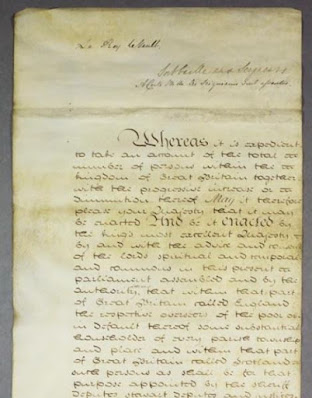Do you have York Ancestors?
If you do you may find them in the The Cause Papers.
These are on online, searchable catalogue of the ecclesiastical courts at York. Here is some background from the website:
Before you begin, read this useful guide to what is in the papers.
Universities often hold wonderful collections of information useful to genealogists. A good example is the Uni of Tasmania that holds a lot o convict records. What else does the York University hold?
through the Bothwick Institute for Archives you can find information as diverse as the York Diocesan Archive and the archives of the Rowntree company and family. Universities also have people who will do some research for you - at a price of course.
Just click here for the full list of what is available.
These are on online, searchable catalogue of the ecclesiastical courts at York. Here is some background from the website:
The Church Courts form the middle ages to the nineteenth century had jurisdiction over a wide variety of cases including amongst others those involving, matrimony, defamation, tithe, probate, clergy breach of faith (Fidei Lesio) and church rights. The papers of court cases heard at York (cause papers) start to survive in the fourteenth century, although there is evidence of archiepiscopal courts before this. In the 1300s there was one central court – the curia Ebor – where the cases were heard, but in the fifteenth century the consistory court and the chancery court were established. Cases heard at York included those arising from disputes within the diocese and appeals from other diocese in the Northern Province. Appeal from York could be to Canterbury or straight to the Papal courts, until the Reformation: in 1533 the Ecclesiastical Licences Act established the High Court of Delegates and Court of Faculties acting instead of the papal courts of appeal. In 1580s the Court of High Commission, which had been in existence from the 1550s on an irregular basis, was regularly established, although this was to be abolished in 1641.
The courts were suspended during the Protectorate, but after the restoration in 1660 they were re-established, but the authority and prestige of the Church Courts declined gradually from the late seventeenth century on, although the large number of cause papers surviving at York is ample evidence that the Courts were still in regular use. In 1754 Hardwick's Marriage Act, aimed at preventing clandestine marriage, was passed through Parliament – the first secular legal enactment on marriage, the preserve of the ecclesiastical courts. In 1832, the Special Report on the Practice and Jurisdiction of the Ecclesiastical Courts, suggested the reform of the courts and their jurisdiction and the 1830s, 1840s and 1850s saw a raft of legislation which removed parts of the ecclesiastical courts’ jurisdiction. The 1836 Tithe Commutation Act, by ensuring the long term commutation in tithe payments for monetary payments, marked the effective end of this area of law in the courts. In 1855 the Church lost jurisdiction over defamation and in 1857 the Matrimonial Causes Act also marked the end of cases concerning marriage in the Church Courts. Finally the 1858 implementation of the 1857 Court of Probate Act brought testamentary cases under the secular courts. The ecclesiastical courts continue to exist to the present day, but are largely concerned with jurisdiction over clergy discipline and disputed faculty jurisdiction.The catalogue is designed to help access to the papers by presenting key information about each cause and by allowing users to search these details. The database can also be used to order copies of original documents.Searching is quite easy, I recommend using an advanced search to narrow down your options. Take a look at an example case.
Before you begin, read this useful guide to what is in the papers.
Universities often hold wonderful collections of information useful to genealogists. A good example is the Uni of Tasmania that holds a lot o convict records. What else does the York University hold?
through the Bothwick Institute for Archives you can find information as diverse as the York Diocesan Archive and the archives of the Rowntree company and family. Universities also have people who will do some research for you - at a price of course.
Just click here for the full list of what is available.



Comments
Post a Comment
Thank you for your comment on my Blog. I love to get feedback and information to share from my readers.
To keep up to date simply follow me on facebook or subscribe using the button at the top of the blog page.
Barb